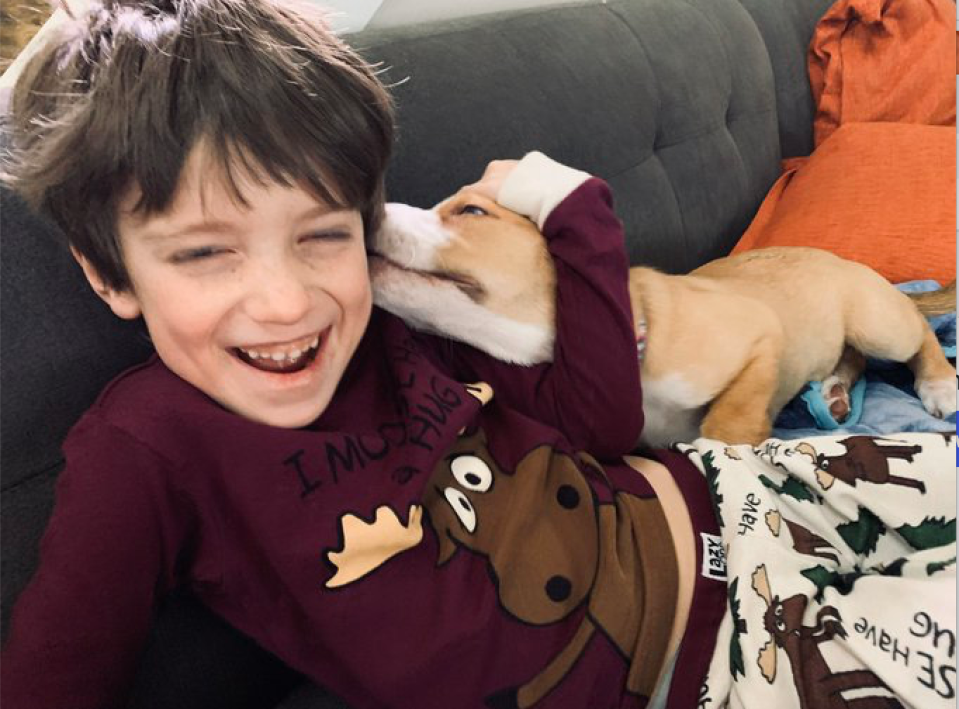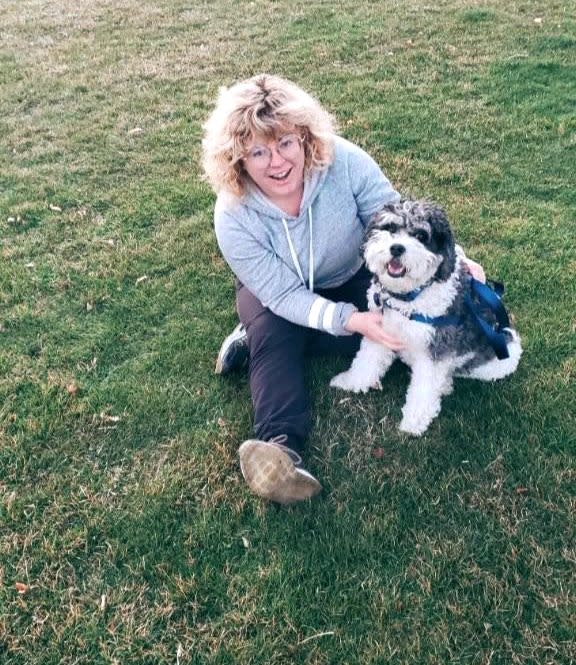People Are Adopting ‘Pandemic Pets’ During Coronavirus, and It’s Restoring Our Faith in Humanity
The coronavirus pandemic, and the quarantining and social distancing that it has mandated, means most of the world is engaged in a giant game of Would You Rather.
Would you rather: be locked in your home, utterly alone, posting enigmatic poetry on NextDoor in the hopes that your neighbors will see it as a cry for help? Or hold a newborn kitten in the crook of your arm?
Would you rather: run your hand over a cooling stovetop to try to remember the warmth of human touch? Or feel the velveteen sensation of a dog’s floppy ear between your thumb and forefinger?
If you’re isolated, anxious, or bored during coronavirus, it may be a good time to adopt a pet. (If you’re not isolated, anxious, or bored during coronavirus, you may be a pet.)
“Right now shelters are overwhelmed that the number of adoptions [will go down], and what I’m afraid of is that more of these animals will be euthanized,” explains Robin Ganzert, president and CEO of American Humane. “We’re asking people to save a life, to raise your hand, and to volunteer to take one or two of these animals home with you from your local shelter.”
Two things are happening at once: The first is that shelters across the U.S. are in crisis and begging for relief, as social distancing, quarantine, and shelter-in-place rules mean that both prospective pet owners and workers can’t come in to facilities.
The second is that pets are providing comfort and relief to desperate people. For ages, cats, dogs, and the occasional rabbit have been beloved companions. But in an unprecedented moment like this one, they’ve become, essentially, emotional first responders.
“Let’s face it: Animal shelters are swamped in the very best of times,” Ganzert says. “Resources that are given to shelters in good times are not available right now.” But the problems of overrun shelters and lonely people can solve each other, she says.
“What we’re doing at American Humane is a call to action to individuals who are self-isolating and are feeling very much alone in these dismal times,” she says. “We’re encouraging them to fight the anxiety and depression by bringing home a foster friend.”
The idea that an animal could help in that effort is actually backed up, fairly well, by scientific evidence (as well as anecdotal evidence by anyone who has ever come into contact with a dog). A review of 17 studies published in 2018 examining the role of companion animals in the management of diagnosable mental health conditions suggested that pets can benefit people with mental health conditions, specifically providing “a consistent and proximate source of calming support and companionship.”
“Animals provide invaluable comfort and companionship, especially during times of crisis,” says Matt Bershadker, president and CEO of the ASPCA, who adds that shelters are “desperate.”
That’s just what Elizabeth Kidd, a millennial in Boise, Idaho, found. She and her boyfriend adopted Watson, an eight-year-old mutt, from her local shelter on Thursday, March 19.
“I am super, super anxious,” Kidd tells Glamour. “A lot of my corona anxiety is because my entire family is in a really small town about three hours from Boise, and I won’t be able to see them until this is over. It is silly, but now I have a little family even though I can’t get to mine.”
Kidd says since getting Watson, she’s been less anxious. “He doesn’t particularly like us to be on our phones—because we can’t be petting him then!—so I read a lot less Twitter last night, which was probably a good thing,” She says. “Plus he’s very, very cute.”
Courtney Hoskins, a single mom in Boulder, Colorado, thought she and her six-year-old could never love another dog the way they’d loved their puppy who died last summer of kidney failure. But then her job transitioned to remote, at-home work, and she realized she was going to have to break the news to her son that his trampoline birthday party would likely have to be canceled. And so she reached out to her local shelter, RezDawg Rescue, and brought home Mabel, a 12-week-old mix.
“You can’t check the news when you are playing tug-of-war with a little puppy!” Hoskins says. “She needs walks throughout the day, and she helps us stick with a schedule. At night, we all watch TV together, and cuddling with her as she sleeps in my arms is so soothing.”

Anyone who is thinking about adopting or fostering a pet from a local shelter "should reach out to that shelter immediately,” Bershadker says. In the meantime, let’s go through some FAQs—which of course stands for furry adorable questions. (Yes, thanks for asking, self-isolation is getting to me.)
Can pets get coronavirus?
According to the CDC, “At this time, there is no evidence that companion animals, including pets, can spread COVID-19.” Ganzert jokes, “Only their unconditional love is contagious.”
What if I’m not ready to commit to a new pet?
You don’t need to. Freeing space, and in some cases evacuating every animal, is the top priority for shelters. Fostering—caring for an animal temporarily, rather than adopting—could save its life, says Brittany Feldman, the executive director of Shelter Chic, a foster-based rescue group in Brooklyn. “There are shelters that have sometimes 200-plus dogs and 100 cats, and these animals need to be taken care of multiple times a day,” she says, adding that, generally, city shelters have mandates to euthanize animals if they become overrun. With employees and volunteers unable to come into work during the pandemic and more and more people surrendering their pets or putting off adoption to a later date, “it’s a real crisis.” Fostering right now can both save an animal and help keep workers and volunteers safe. “The fewer animals that are sitting in the shelter, the fewer staff need to be taking care of them,” Feldman says.
Former Glamour staffer Sam Leach, who’s currently staying with family in Palm Beach Garden, Florida, applied for a foster dog through the Peggy Adams Animal Rescue League. Then there was a surprise. “The dog we were matched with had just given birth to six puppies,” Leach says. They decided to take them all. “They’re currently about a pound and a half, and we’ll have them until they're three pounds, which is the size they can be adopted at.”
How does fostering work?
“The number one thing is to look up your local city shelter, probably a humane society or an animal care shelter, or google ‘local humane society’ or ASPCA,” says Feldman. “Those shelters are going to have their own fostering system. Or through social media, if you look up the hashtag like ‘[your town] dog rescue.’” From there, making an appointment, which might happen via Zoom, and filling out paperwork that will ask about your home, your experience, and any other pets you have is simple. Don’t be thrown if they ask you for references and grill you a little, in spite of the circumstances—Feldman warns that bad actors like people who run dogfighting circles use crises like these to exploit shelters.
Meghan Morris, a financial writer, and her boyfriend, a tech employee, have volunteered to foster a dog after years of not having the capacity to take on full dog ownership. “Typically, my work and volunteering schedule includes a number of evening commitments, which would require leaving a dog alone for long hours,” she says. “Now I finally have the time on my calendar to give a dog the time they deserve to help them feel safe and comfortable. We’re looking to foster at first so we both get comfortable with the dog and see how everyone adjusts. After that, we’ll evaluate if it makes sense to adopt.”
Is it really safe to physically go to a shelter right now?
The CDC continues to recommend staying more than six feet away from others, which is typically hard to do during pet adoption. However, many shelters have shifted to in-person appointment models, or are even offering drive-up adoptions. “Most of the shelters that I’ve seen are by appointment only,” Feldman says. Eric Rayvid, the public relations director for Best Friends Animal Society, a national animal welfare group, says that shelters and rescue groups are adapting as quickly as they can to the crisis. “Please be patient and understand that we’re all trying to keep up, and the systems that were established for meeting pets, adopting and fostering have all changed in the last week or so,” he says. “Meet-and-greets may now take place virtually by webcam, and pick up of pets may take place by drive-through or drop-off. Everyone wants to see dogs and cats find homes, either temporarily or permanently, but how we accomplish that is being worked out on the fly!”

What if I get sick?
“We also encourage all pet owners to identify caretakers who can help with pet care if they can no longer meet their responsibilities,” says Bershadker. This also helps plan ahead to reduce potential strain on shelters, since, sadly, if people get sick and surrender their pets, shelters will be even more overwhelmed. Pets should always be part of family emergency preparedness plans, Bershadker notes.
How can I help if adopting or fostering isn’t an option for me?
Donations can still make a meaningful difference for shelters. There are several types of animal protection groups that could use your help right now—national organizations, like American Humane and the ASPCA, city shelters like Austin Pets Alive! which is trying to home 50% of its animals right now, and smaller rescues like Shelter Chic or like Rocket Dog Rescue in San Francisco, which exist in every city and help save pets from kill shelters and relieve overburdened shelters.
“Many shelters are looking at shortages of food and supplies, as individuals stocking up and supply-chain issues have made supplies harder to come by,” Rayvid says. He recommends reaching out to your local shelters and rescues, using this online search tool, and asking what they need.
Jenny Singer is a staff writer for Glamour. You can follow her on Twitter.
Originally Appeared on Glamour

